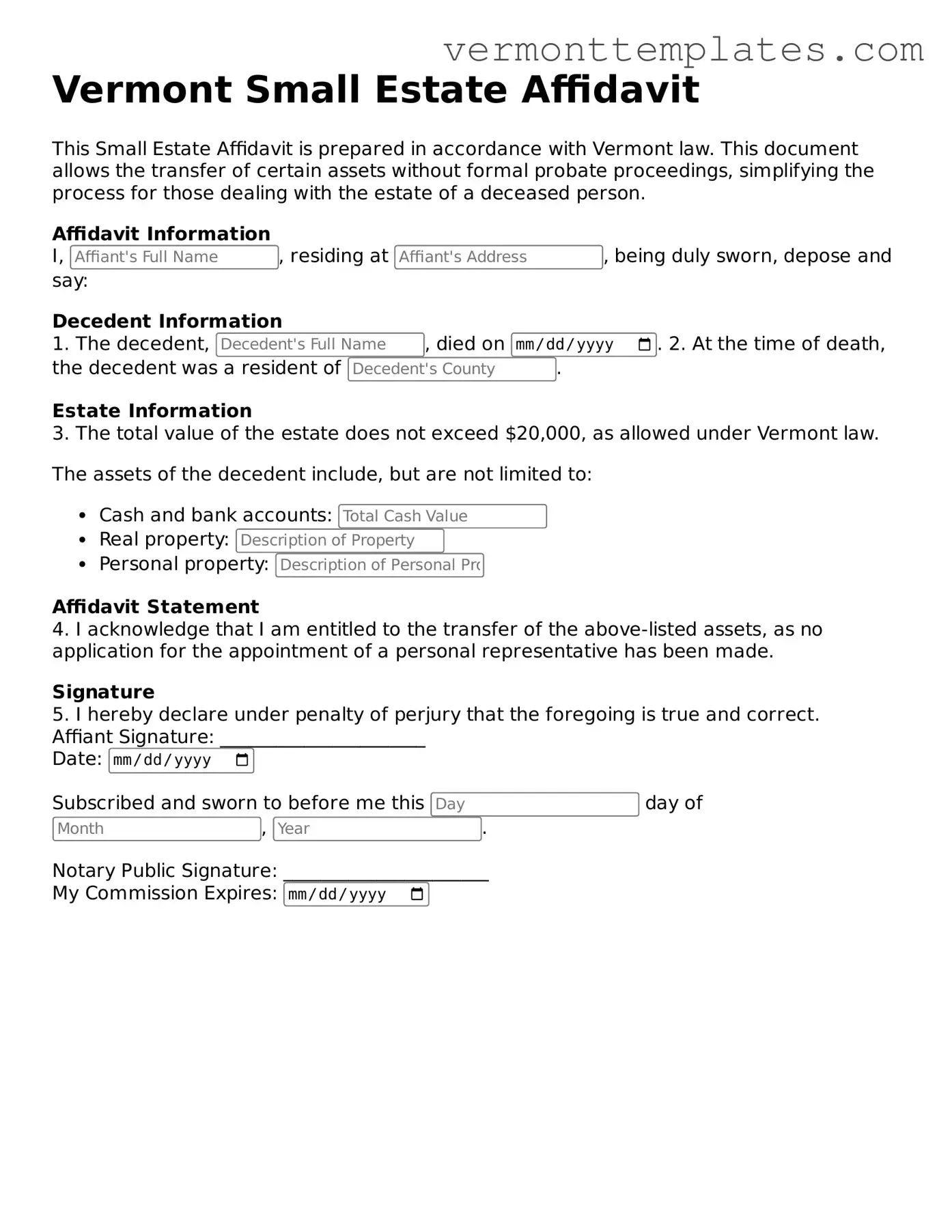Legal Small Estate Affidavit Template for Vermont
The Vermont Small Estate Affidavit form is a legal document that allows individuals to settle the estate of a deceased person without going through the full probate process. This form is typically used when the total value of the estate is below a certain threshold, simplifying the transfer of assets. Understanding how to properly complete and file this affidavit can streamline the process for heirs and beneficiaries.
Open Small Estate Affidavit Editor
